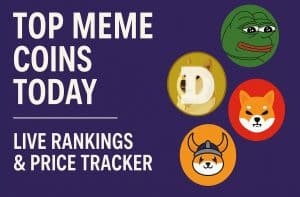Did you know in every three discussions about Web3, one is in favor, but two criticize it? The most slammed article is called ‘Web3 is bullshit’1?. This shows the strong disagreements and myths that cloud blockchain technology. Blockchain is more than just tech talk and crypto terms. It’s reshaping our digital world in ways that some people don’t fully understand. Knowing what blockchain really is becomes key when we’re surrounded by false ideas of its privacy, safety, and ease of use.
Some think blockchain is only for digital money, or that it keeps you totally anonymous. These wrong stories hide what blockchain technology can really do. This part is about exposing those myths and explaining the true nature of blockchain. By seeing both the support and the criticism, and the real strengths of this technology, we can truly understand the change blockchain is bringing.
Key Takeaways
- Polarizing opinions on Web3 can blur the real power of blockchain1.
- Blockchain’s uses go way beyond just cryptocurrencies.
- To really get blockchain, you have to see its openness and traceability.
- Many get blockchain’s safety and growth potential wrong.
- Learning about blockchain helps clear up myths from facts2.
Understanding the Basics of Blockchain Technology
In our fast-changing digital world, understanding blockchain basics is vital. This technology brings several key benefits that interest many areas. Through this section, you’ll learn about blockchain’s important facts and how it works.
What is Blockchain?
Blockchain is essentially a decentralized ledger spread across many computers. Unlike traditional databases managed by a central figure, blockchain operates without a middleman [access more insights]. This setup ensures that all recorded data is permanent and open3. By using cryptographic techniques to link data blocks, it creates a tamper-proof history4. This feature highlights blockchain’s ability to secure data and increase its integrity.
How Does It Work?
Blockchain’s operation combines cryptography, a spread-out ledger, and consensus methods. When a transaction starts, it’s combined with others in a block for a set period3. Various network nodes then have to verify this new block using consensus algorithms4. After verification, the block joins the chain, creating a fixed record.
Platforms like Bitcoin and Ethereum use different protocols to keep the network secure. Bitcoin uses a proof-of-work system, while Ethereum is moving to proof-of-stake for better scalability4. A key fact about blockchain is its independence from central authorities. This reduces failure risks and increases system resilience.
Understanding the benefits and complexities of blockchain can unveil its potential. It offers enhanced security, transparency, and cuts out middlemen. Thus, blockchain is set to revolutionize the digital landscape.
| Traditional Ledger | Blockchain Ledger |
|---|---|
| Centralized Management | Decentralized Management |
| Mutable Entries | Immutable Entries |
| Higher Chances of Data Breach | Enhanced Security via Cryptography |
| Dependent on Intermediaries | Eliminates Intermediaries |
Blockchain is Just for Cryptocurrencies
Many people think blockchain is only for digital money like Bitcoin. But blockchain does much more than that.
Different Uses of Blockchain Technology
Blockchain is improving many areas, making data sharing safe and confirming identities reliably. In healthcare, it keeps medical records accurate, cuts mistakes, and fights fraud. For supply chains, it tracks products from start to finish, ensuring they’re real.
Blockchain helps make buying homes clearer, speeding up the process without middlemen. It also makes voting secure, preventing tampering. These examples show that blockchain changes industries, not just in cryptocurrencies4.
The Role of Blockchain in Various Industries
Blockchain is changing many sectors for the better. In finance, it does more than just handle digital money. It makes sending money across borders easy and introduces smart contracts. These improvements cut costs and streamline operations. Governments are using blockchain too. It helps them be more open and stick to rules by keeping track of transactions4. This proves blockchain can make governments more efficient and responsible, not just challenge them.
- Healthcare: Enhances the integrity and security of medical records.
- Supply Chain: Provides improved traceability and authenticity of goods.
- Real Estate: Facilitates transparent and efficient transactions.
- Voting Systems: Ensures secure and tamper-proof voting processes.
- Finance: Enables efficient cross-border payments and smart contracts.
- Government: Enhances transparency and regulation enforcement.
In conclusion, understanding blockchain’s vast uses proves it’s not just for cryptocurrencies. Its flexibility is sparking new advances and efficiency in various fields, showing its significant influence.
Blockchain is Completely Anonymous
There’s a common thought that blockchain hides identities completely. But that’s not quite right. Blockchain allows users to transact without showing who they really are using pseudo-anonymity. Every deal made is out there on the blockchain for all to see. This setup shows that the idea of being totally unknown is not true.
The Myth of Blockchain Anonymity
Some people think blockchain keeps users hidden completely. This belief, however, misses the mark. Instead, it uses pseudo-anonymity, meaning you can’t easily link actions to people. This might make you think you’re hidden. Yet, every action is there for the world to see on the ledger. This openness means no one is truly hidden, which helps make things more honest.
Transparency and Traceability in Blockchain
The clear nature of blockchain is a big draw. It means every transaction is there for everyone to check on a public ledger. This makes people trust more. Also, you can track every step of a transaction while keeping the doer’s identity secret. This ensures the block chain’s honesty can always be checked by anyone.
Take Bitcoin, for example. While some think it’s secret, every move is actually trackable. This helps stop illegal moves and keeps things above board5. Such tracking is crucial for law folks to make sure rules are followed5. That’s what sets blockchain apart, offering some cover while keeping the user’s actions in the light.
The clever mix of hiddenness and openness is key to blockchain. It makes sure to keep a balance without giving up on user privacy. Knowing that transparency in blockchain doesn’t get rid of privacy completely but adds a new way to track is vital6.
| Feature | Explanation |
|---|---|
| Pseudo-Anonymity | Transactions are traceable but not directly linked to personal identities. |
| Blockchain Transparency | All transactions are publicly recorded, offering a clear audit trail. |
| Traceability | Ability to trace the origin and path of transactions, enhancing security and accountability. |
Blockchain’s clever system offers big benefits, crushing the anonymity myth. It gives us transparency and the power to track, setting higher security than old systems.
Blockchain is 100% Secure
Many people think blockchain is totally secure. This is a common myth. While blockchain technology greatly increases security, it’s not without flaws. A problem known as a 51% attack can occur when someone controls most of the network. This shows that even with advanced cryptography, there are weaknesses.
Software glitches and coding mistakes can also create security gaps. Even a strong blockchain system can be compromised by simple human errors. These issues prove that blockchain doesn’t offer absolute security. It’s important to recognize these flaws to better protect ourselves.
It’s a mistake to believe that blockchain’s design stops all threats. By testing these systems for weaknesses, we learn security is always a concern7. Identifying and fixing these issues needs constant attention and smart analysis. This is similar to security practices in other areas7.
To really understand and use blockchain safely, we must look beyond the hype. Knowing its limits helps us weigh its pros and cons wisely. Using multiple security measures, not just blockchain, is key to protecting our digital assets.
Blockchain Technology is Too Complicated
Many think blockchain is too complex for everyday people. This idea stops more people from using it. But, big steps have been made to make blockchain easier to use. Now, better design and helpful guides have made this tech much simpler8.
Websites like Coinbase and Binance are leading the way in making blockchain friendly. They offer easy-to-follow instructions and guides. This effort helps people feel less scared about using blockchain. Many users talk about these challenges and share ideas on how to overcome them8.
Early experiences with blockchain often lead to misunderstandings. But, just like AI, blockchain has gotten better over time. This shows that even if something starts complicated, it can become easier to use9.
- Advances in user interface design
- Proliferation of educational tools
- Real-world applications simplifying blockchain usage
- Community-driven support and resources
Blockchain is always getting better, making it simpler for everyone. Forums and talks help a lot by bringing different views together. Everyone agrees that even though blockchain started off complex, new improvements are opening it up to more people.
Blockchain Can’t Scale
Many people talk about how hard it is to scale blockchain technology. Traditional blockchains like Bitcoin struggle with slow speeds and high fees. Luckily, scalable blockchain solutions are being created to fix these problems.
Scalability Issues and Solutions
One big problem is how much data blockchains use. For example, a Bitcoin Core user found their system uploaded way more data than it downloaded10. This user said they use a lot of their data limit just for uploads10. It’s clear that blockchain has a big issue with handling data efficiently10.
To tackle these issues, new ideas are in play. The Lightning Network helps Bitcoin handle more transactions without overloading the network. Sharding breaks the blockchain into smaller pieces for better performance. Lastly, layer-two protocols are another way to speed up transactions and lower costs.
Examples of Scalable Blockchain Systems
Some blockchains are made to be scalable from the start. They use special techniques to manage more transactions without losing security or control.
Ethereum 2.0 is a great example, with its sharding and proof-of-stake to handle more transactions. Solana is another, with its unique algorithm for quick and efficient processing.
Here’s a table comparing scalable blockchain solutions among different platforms:
| Blockchain System | Scalability Feature | Transaction Speed | Consensus Mechanism |
|---|---|---|---|
| Bitcoin | Lightning Network (off-chain solution) | ~7 TPS | Proof of Work |
| Ethereum 2.0 | Sharding + Layer-two solutions | ~100,000 TPS (projected) | Proof of Stake |
| Solana | Proof of History | ~65,000 TPS | Proof of Stake |
Traditional blockchains have their issues with scaling. However, new technologies and methods are making blockchains much more efficient and scalable blockchain solutions.
All Blockchains Are the Same
Many people think all blockchains are the same. But this isn’t true at all. Different blockchains have unique features and uses. For example, public and private blockchains show this diversity. Public ones, like Bitcoin, are open and use a system called Proof of Work. This can process millions of transactions per second11.
Private blockchains, used by companies, have limited access and more control. They offer better privacy and security. With technologies like Proof of Stake, transactions are quicker, taking about six seconds per block11. This also lowers their impact on the environment, unlike the Proof of Work method. Plus, they are designed to meet specific needs, such as running on less power than a gaming PC11.
Blockchains also differ in how much transactions cost and how they’re supported. For instance, some developers were happy with larger 4MB blocks since August 201711. This helped handle more transactions. They also vary in how they store data, using 1-4TB of hard drive space effectively11. Some, like the BTC Lightning Payments, make the system faster and more user-friendly12.
This variation allows blockchains to change many industries, from banking to health. Knowing these differences helps us use each blockchain in the best way possible. It ensures we make the most of what every blockchain offers.
Blockchain Will Replace Traditional Banking
The debate on whether blockchain will replace traditional banking is hot. Some people think banks will soon be outdated, yet the truth is more complex. Banks and blockchain may work together in the future.
The Future of Blockchain in Finance
Blockchain could change finance, especially in making transactions faster. This tech may lower costs and speed up how we transfer money. Still, blockchain has hurdles like tough rules and getting everyone on board13. But, its promise for safer and clearer financial dealings is huge.
Blockchain vs. Traditional Banking Systems
It’s crucial to compare blockchain and traditional banks’ good and bad points. Banks win in regulations and trust. But blockchain cuts out the middle-man, making transactions quicker14. Blockchain and banks will likely exist together, with blockchain bringing new solutions to today’s banking challenges15.
7 Blockchain Myths That’ll Make You Facepalm
There’s a lot of wrong info about blockchain out there. Many think it’s only used for cryptocurrencies. Yes, there are over 800 types of digital money now. And this number might jump to between 5,000 and 10,000 soon. But blockchain is more than that16. It is also making big changes in supply chain management, healthcare, and even how we vote.
Some people say blockchain is totally anonymous. But, while it doesn’t show your name, transactions can be tracked. Blockchain’s ability to be both transparent and traceable means it’s pretty accountable. Plus, some blockchains like Ethereum can handle smart contracts. This adds features way beyond basic transactions16.
Others claim blockchain is perfectly secure. Yet, while the main network of Bitcoin hasn’t been hacked, some exchanges have16. This shows us that it’s not just the tech that needs to be safe but everything around it too. Also, worries about blockchain being hard to scale are often overblown. Solutions like sharding and off-chain transactions are working to solve this.
Then, there’s the myth that blockchain tech is too complex. True, the details can be tricky. But the experience for users is getting easier all the time. Also, not all blockchains are the same. They vary in structure and what they can do, from public ones like Bitcoin to private ones for companies.
Some think blockchain will kick out traditional banks. But both have good and bad points. It looks like the future will blend blockchain with regular banking. This way, they’ll help each other out.
Last, thinking Bitcoin is the only real blockchain out there is wrong. Ethereum, Ripple, lite, and many others offer different functions. This shows how flexible blockchain tech is17. By understanding the truth about blockchain, we can appreciate its true power and possibilities.
Bitcoin is the Only Real Blockchain
Many people think Bitcoin is the only true blockchain. This view misses the many other blockchain projects and cryptocurrencies out there. While the ups and downs of crypto investments often grab attention, it’s important to see the different features and goals of other blockchains besides Bitcoin18.
The idea that Bitcoin is the whole of blockchain technology comes from not fully understanding its vast range. Cybersecurity expert Bruce Schneier, and other big names like Tim Bray and Stephen Diehl, have doubted various cryptocurrencies. Yet, this does not take away from the special value and new ideas from other blockchain techs19. These different opinions show the wide reach and promise of bitcoin and blockchain technologies, far more than just Bitcoin itself.
- Bitcoin is famous for its high value and popularity, but other cryptocurrencies have exciting uses too.
- Blockchain tech reaches into fields like supply chain, healthcare, and digital ID, showing its potential beyond just money stuff.
- People like Elon Musk often sway the crypto market, showcasing the lively and diverse world of blockchain18.
Doubts from leading software creators and open-source supporters spark debates on cryptocurrencies’ use and future. This skepticism leads to more research and better creations beyond Bitcoin. So, it’s clear that Bitcoin isn’t the only blockchain out there. It’s just a part of a much bigger and changing field in digital finance and tech19.
| Aspect | Bitcoin | Other Blockchain Projects |
|---|---|---|
| Primary Use | Digital Currency | Varied (Supply Chain, Healthcare, Digital Identity) |
| Market Influence | Highly Volatile, Influenced by Public Figures | Varies, Depending on Application and Adoption |
| Community Skepticism | High, Notable Critics in Tech Space | Moderate, Growing Approval with New Use Cases |
Blockchain is Only a Passing Trend
Thinking of blockchain as just a temporary craze is a mistake. This view doesn’t see the big picture of how blockchain is changing things. The technology has come a long way from just being about digital money. It now touches many fields and industries.
Important events, like the one by Data & Society on the effects of big tech, show how much we are talking about technology. This includes blockchain20. These talks moving into the spotlight shows we are getting ready for new tech21.
The future of blockchain is bright, improving how we trade, share, and secure information. The market for blockchain is expected to grow. This growth comes from businesses worldwide understanding its value. Talking about tech’s impact, with experts like Tressie McMillan Cottom and Janet Vertesi, shows how serious the debate is20.
Public interest in things like fanfiction shows we’re more open to new tech like blockchain21. Blockchain will change how we handle data, track products, and even vote. It’s set to be a major part of our tech future.
Big events like San Diego ComicCon show people are eager to learn about new tech21. With blockchain’s growth, it’s clear it will remain a key player in innovation.
Blockchain is the Same as Bitcoin
Many think blockchain and Bitcoin are the same, but they’re different. Blockchain’s uses go way beyond just digital money. Yes, Bitcoin is a key crypto that uses blockchain. But blockchain’s use goes much wider than that.
Distinguishing Bitcoin from Blockchain
Bitcoin is well-known in the crypto world. It’s a digital currency that’s decentralized, meaning no single group controls it. This makes it resistant to censorship. Blockchain, however, is a foundational tech with many uses, like managing supply chains or securing votes16.

Applications Beyond Cryptocurrency
Ethereum’s blockchain allows Smart Contracts to automatically carry out tasks when conditions are met16. This has led to new uses in finance, governance, and compliance.
Blockchain is also revolutionizing various industries. It’s overcoming challenges to become more scalable. New tech is helping blockchain handle more transactions, much like Visa does, but faster4.
Blockchain can also help governments work better, from creating money to collecting taxes4. Its ability to be transparent makes it useful far beyond just crypto.
| Bitcoin vs. Blockchain | Features |
|---|---|
| Bitcoin |
|
| Blockchain |
|
Blockchain is Infallible
Blockchain is growing but it’s not perfect. Knowing the weaknesses and risks of blockchain is vital for both users and developers.
Vulnerabilities in Blockchain Technology
Blockchain can face security problems, technical issues, and attack risks. For example, the DAO hack was a big deal. An attacker found a weak spot in the smart contract code. This led to the theft of $50 million in Ether. There have also been breaches in cryptocurrency exchanges. This shows blockchain has strong security but it’s not without dangers. It needs ongoing improvements.
Online talks have raised concerns about protests leading to blockages and harm. They’ve been compared to disruptive sports games and concerts. Some protests have even included harmful Nazi ideas. Handling these protests means finding a balance between free speech and keeping order. This can be tricky for the police22.
It’s clear that keeping blockchain networks safe is important as they are not free from weaknesses.
Examples of Blockchain Failures
There have been real cases showing the risks of blockchain technology. John Remsburg made a list in 1909, later added to by Michael Paulkovich. It talks about ancient writers who didn’t mention Jesus, leading to doubts about historical accounts. Like those doubts, blockchain’s promise of secure decentralization has seen setbacks. The Mt. Gox exchange hack is an example where things went wrong. Blockchain discussions online show many people talking about these issues over days23. This proves that, despite its benefits, blockchain’s reliability isn’t guaranteed. Steps must be taken to reduce risks in blockchain technology.
Detailed analysis of blockchain technology conversations shows lasting interest and many viewpoints over time. This means there are deep and thorough discussions happening. These talks highlight the need for constant updates and improvements in blockchain security measures23.
Conclusion
We’ve explored blockchain myths and facts. It’s clear that knowing the truth about blockchain is key for smart choices. Many myths lead to wrong ideas, which can stop us from using this new technology right. Now, you know the facts and can tell what’s real from what’s just noise.
Blockchain isn’t just a fancy word. It shows a new way to keep data safe and clear. It’s important to see both its strengths and weaknesses24. As things keep changing, staying informed with reliable info will help guide you.
Getting rid of myths about blockchain helps us all understand it better. This lets people and companies think wisely about using blockchain. Knowing the truth and staying skeptical of big claims will strengthen your knowledge in this changing area.
























 Bitcoin
Bitcoin  Ethereum
Ethereum  Tether
Tether  XRP
XRP  Solana
Solana  USDC
USDC  Lido Staked Ether
Lido Staked Ether  TRON
TRON  Dogecoin
Dogecoin  Cardano
Cardano  Figure Heloc
Figure Heloc  WhiteBIT Coin
WhiteBIT Coin  Wrapped stETH
Wrapped stETH  Bitcoin Cash
Bitcoin Cash  Wrapped Bitcoin
Wrapped Bitcoin  Chainlink
Chainlink  USDS
USDS  Hyperliquid
Hyperliquid  Binance Bridged USDT (BNB Smart Chain)
Binance Bridged USDT (BNB Smart Chain)  LEO Token
LEO Token  WETH
WETH  Stellar
Stellar  Wrapped eETH
Wrapped eETH  Monero
Monero  Ethena USDe
Ethena USDe  Coinbase Wrapped BTC
Coinbase Wrapped BTC  Zcash
Zcash  Litecoin
Litecoin  Avalanche
Avalanche  Sui
Sui  Hedera
Hedera  Shiba Inu
Shiba Inu  Dai
Dai  sUSDS
sUSDS  World Liberty Financial
World Liberty Financial  Cronos
Cronos  USDT0
USDT0  Toncoin
Toncoin  PayPal USD
PayPal USD  Uniswap
Uniswap  Polkadot
Polkadot  Ethena Staked USDe
Ethena Staked USDe  Mantle
Mantle  Aave
Aave  Bittensor
Bittensor  USD1
USD1  Canton
Canton  Bitget Token
Bitget Token